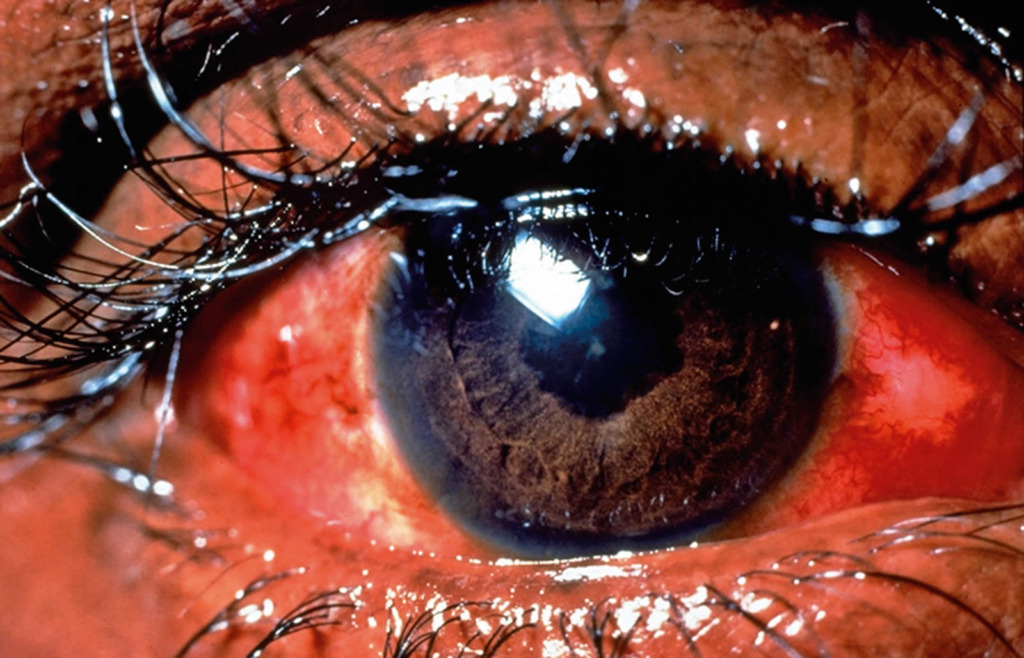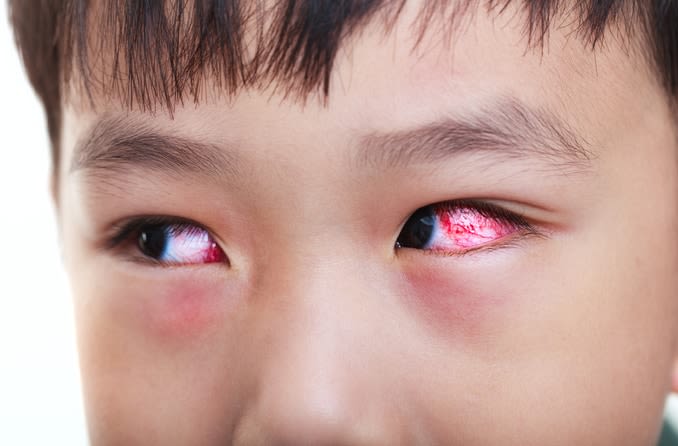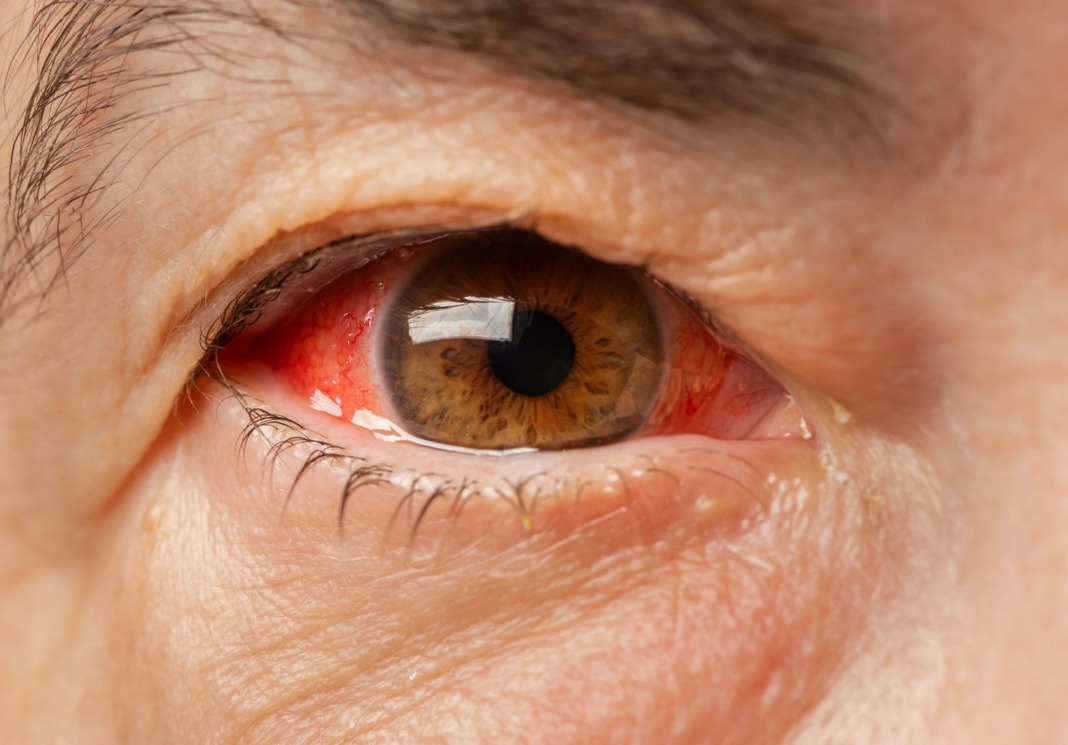Pink eye, also known as conjunctivitis, is a common eye condition impacting individuals of all ages. Although often linked with children, it can affect adults due to various reasons. This condition involves inflammation of the clear membrane covering the eyeball and inner eyelid, referred to as the conjunctiva. When the tiny blood vessels within this membrane swell and become irritated, the whites of the eyes may appear pink or reddish. Hence, the term “pink eye” is another name for conjunctivitis. Understanding the causes of pink eye in adults is crucial for effective management and prevention.
Pink eye can be very irritating, but it rarely affects vision. Treatments can help reduce the discomfort associated with pink eye. Because pink eye can spread, early diagnosis and precautionary measures can help prevent it from spreading. Pink eye is most commonly caused by a viral infection, but it can also be caused by bacterial infections and allergic reactions.

Types of Pink Eye
Before delving into the causes, it’s essential to recognize the different types of pink eye that affect adults. Primarily, there are three classifications:
- Bacterial Infections
Bacteria like Streptococcus pneumoniae and Staphylococcus aureus cause bacterial conjunctivitis. This type of highly contagious pink eye frequently appears as a sticky, yellow, or green discharge coming from the eye. Common causes include touching your eyes with unwashed hands, sharing makeup, and coming into contact with someone who has conjunctivitis. It is typically brought on by staphylococcal or streptococcal bacteria.
- Viral Infections
Adenovirus is one of the viruses that cause viral conjunctivitis. This type of pink eye, which causes symptoms like redness, watery discharge, and discomfort, usually coexists with upper respiratory infections. Viral pink eye is usually caused by common cold viruses, but it can also occur when someone coughs or sneezes close to you. It can also occur if you blow your nose hard while you have a cold, which could spread the infection from your respiratory system to your eyes.
- Allergic Reactions
Allergens like dust, pollen, or pet dander can cause allergic conjunctivitis, which typically affects both eyes and causes symptoms like itching, redness, and tearing. Allergy-induced pink eye is frequently experienced by people who are prone to seasonal allergies. Pink eye can occur when an allergic person comes into contact with allergenic materials, such as pollen. Furthermore, people who wear hard or soft contact lenses that are not changed often enough may develop giant papillary conjunctivitis, an allergic form of pink eye.
- Irritants
External factors such as smoke, pollutants, or chemicals can cause irritant-induced conjunctivitis. Though they specifically arise from direct contact with irritants, its symptoms are similar to those of allergic conjunctivitis. Air pollution, contact with different chemicals, or exposure to irritants like chlorine in swimming pools can all result in pink eye.
Symptoms of Pink Eye in Adults
- Redness in the white of the eye or inner eyelid.
- Thick yellow discharge that forms crusts, especially after waking.
- Green or white discharge from the eye.
- Itchy eyes, particularly in cases caused by allergies.
- Burning sensation in the eyes, especially when caused by chemicals or irritants.
- Blurred vision.
- Heightened sensitivity to light.
- Swollen eyelids.
- Redness in one or both eyes.
- Itching in one or both eyes.
- Eye discharge forms crust overnight, possibly causing difficulty opening the eye or eyes in the morning.
- Excessive tearing.
- Light sensitivity, referred to as photophobia.
- Eyes appear pink or red.
- Gritty sensation in the eyes.
- Watery or thick discharge accumulates on the eyes during the night.

Understanding The Causes Of Pink Eye In Adults
Bacterial Infections:
Pink eye caused by bacteria typically spreads through direct contact with infected individuals or contaminated surfaces. Poor hygiene, such as touching the eyes without washing hands, contributes to its transmission.
Viral Infections:
Viral conjunctivitis can result from exposure to respiratory droplets or touching surfaces contaminated by the virus. Individuals with weakened immune systems are more susceptible.
Allergic Reactions:
Allergies trigger an inflammatory response in the eyes when exposed to allergens. Seasonal changes or environmental factors often play a role in allergic conjunctivitis.
Irritants:
Chemicals, smoke, or other irritants directly irritate the conjunctiva, leading to inflammation and symptoms resembling other forms of pink eye.
The Risk Factor
Among the risk factors for pink eye are:
- Exposure to a person suffering from bacterial or viral conjunctivitis.
- Wearing contact lenses—especially long-wearing ones.
- Exposure to an allergen, in the case of allergic conjunctivitis.
Prevention Of Pink Eye
Implement appropriate hygiene measures to stop the spread of pink eye. Think about the following actions:
- Avoid putting unwashed hands near your eyes.
- Often wash your hands.
- Make sure to launder towels and washcloths daily, utilizing a fresh set each time.
- Don’t share washcloths or towels.
- Regularly change the pillowcases.
- Throw away outdated eye makeup, like mascara.
- Never share personal cosmetics or eye care products.
It’s vital to remember that pink eye is just as contagious as the common cold. Resuming regular activities such as work, school, or childcare is generally acceptable as long as you can maintain good hygiene and avoid close contact. It might be wise to stay at home until symptoms subside if these activities require a lot of close contact with people.
Conclusion
Understanding the causes of pink eye in adults is crucial for both prevention and prompt treatment. Identifying the specific cause aids in adopting preventive measures and seeking appropriate medical care. Maintaining good hygiene, avoiding contact with infected individuals, and managing allergies can significantly reduce the risk of contracting pink eye.
FAQs
- Is pink eye only contagious in the bacterial form?
No, viral and bacterial conjunctivitis are both highly contagious and can spread through direct or indirect contact.
- Can pink eye in adults be prevented?
Yes, practicing good hygiene, avoiding touching the eyes with unwashed hands, and minimizing exposure to allergens or irritants can help prevent pink eye.
- Can over-the-counter eye drops treat pink eye?
Depending on the cause, some cases may benefit from over-the-counter eye drops, but consulting a healthcare professional is recommended for proper diagnosis and treatment.
- How long does pink eye last in adults?
The duration varies based on the cause. Bacterial and viral conjunctivitis may last for 1-2 weeks, while allergic or irritant-induced pink eye might resolve once the irritant is removed or the allergy is managed.
- When should one seek medical attention for pink eye?
If symptoms persist, worsen, or if there’s severe pain, blurred vision, or sensitivity to light, seeking medical advice is crucial to rule out any complications.



